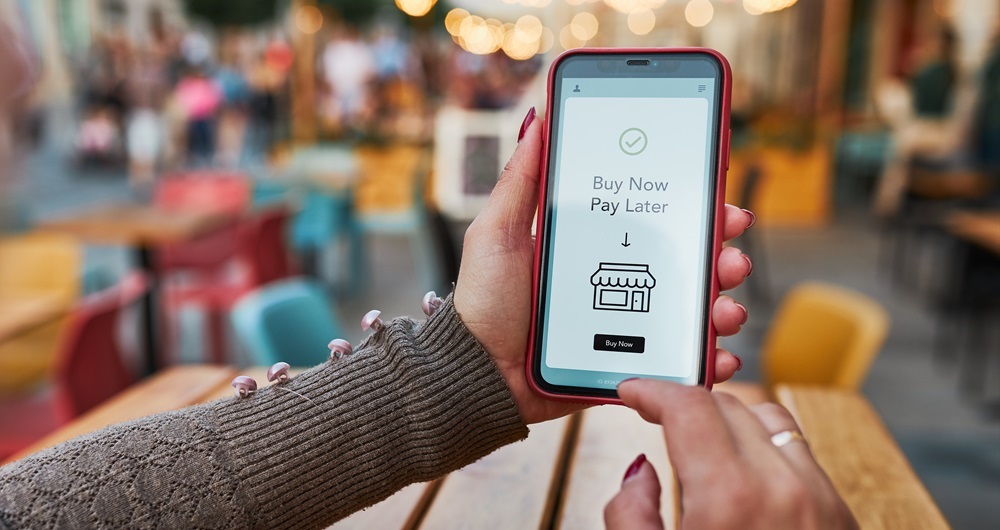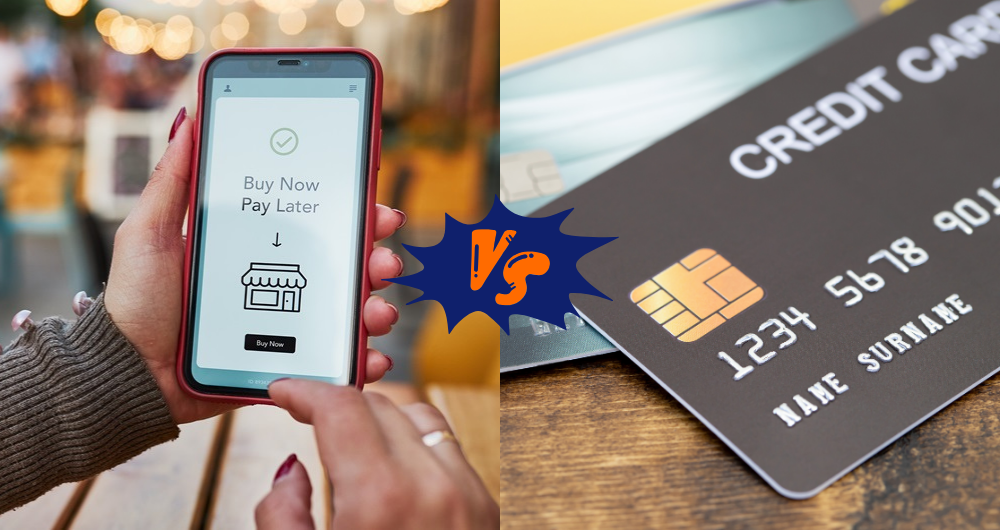
Introduction: The Rise of BNPL
In recent years, Buy Now, Pay Later (BNPL) has become one of the most popular payment methods globally, transforming how consumers shop and manage their finances. The core appeal of BNPL lies in its simplicity: it allows consumers to purchase items immediately and split payments over time, often without interest, provided installments are paid on time. This feature has made BNPL especially attractive to younger generations, who increasingly turn away from traditional credit cards due to high interest rates and concerns over long-term debt.
The global BNPL market has experienced exponential growth, valued at $120 billion in 2021 and expected to reach $576 billion by 2025, according to GlobalData. In the U.S., the BNPL market was valued at $70 billion in 2023, and it is expected to grow at a compound annual growth rate (CAGR) of 27.5% through 2025.
One key driver of BNPL’s growth is its accessibility. Unlike traditional credit cards, which often require a thorough credit check, BNPL services typically use “soft” credit checks, making them more accessible to a broader range of consumers, including those with lower credit scores or no established credit history. This inclusivity, combined with the lack of interest or fees (for on-time payments), has made BNPL a preferred option for millions of consumers globally.
Key BNPL Players: Fintechs and Banks
The BNPL market has traditionally been dominated by fintech companies, which have innovated rapidly to cater to younger, tech-savvy consumers. However, traditional banks are increasingly entering the space, recognizing the potential of BNPL to drive customer engagement and diversify revenue streams. Below is a brief overview of both fintech leaders and major banks making moves in the BNPL market:
Fintech Giants
- Klarna: A Swedish fintech company that has become one of the leading BNPL providers globally. Klarna partners with over 400,000 merchants and offers services like Pay in 4 for interest-free installments. Its success stems from strong branding and seamless integration with retailers.
- Affirm: Based in the U.S., Affirm has seen rapid growth by partnering with major retailers like Amazon and Peloton. Affirm also launched a debit card offering BNPL functionality, expanding its service reach.
- Afterpay: An Australian company with a global presence, Afterpay offers four-installment payment plans. It operates under the name Clearpay in Europe and has gained popularity among younger consumers for its easy-to-use platform.
- PayPal: Known for its digital payments, PayPal has expanded into the BNPL space with PayPal Pay in 4, which allows consumers to split payments across four interest-free installments. Its strong brand recognition has helped it quickly capture market share.
Banks Entering BNPL
- U.S. Bank: Launched Avvance, a BNPL service introduced in 2023, allowing U.S. merchants to offer installment plans. This marks a significant step for traditional banks in competing with fintechs.
- American Express: Amex offers its “Plan It” feature, which enables cardholders to split large purchases into fixed monthly payments. This hybrid solution combines traditional credit with BNPL-like flexibility.
- JPMorgan Chase: Through partnerships with fintech companies, JPMorgan has incorporated BNPL solutions into its broader payments infrastructure, allowing merchants to offer installment plans at checkout.
- Deutsche Bank: Collaborating with fintech Credi2, Deutsche Bank offers its BNPL solution in Europe. This partnership is part of a broader strategy to diversify its payment services and compete in the rapidly growing BNPL market.
- Banco Sabadell: One of Spain’s major banks, Sabadell, has introduced its own BNPL service, known as Instant Credit, which allows customers to pay in installments for online and in-store purchases.
These players, both fintechs and banks, are shaping the future of BNPL, blending financial flexibility with the convenience of modern digital payments. As banks increase their involvement, the competition will likely intensify, driving innovation and improved services for consumers.
Current Trends and Perspectives for BNPL by 2025
1. Expansion into New Sectors
While BNPL was initially popular in e-commerce sectors like fashion, electronics, and home goods, it is now expanding into new industries such as travel, education, and healthcare.
This expansion is largely driven by consumers seeking flexible payment options for more significant purchases beyond retail. For example, Uplift, a BNPL provider, focuses on travel financing and has partnered with airlines and travel agencies to offer payment plans for vacations and flights. Additionally, healthcare-related BNPL solutions are emerging to help patients manage medical expenses without immediate full payments.
2. Increased Competition from Banks
Many traditional banks are entering the BNPL space to compete with fintech companies like Klarna, Affirm, and Afterpay. Major banks like American Express and JPMorgan Chase have integrated BNPL features into their existing financial products.
This increased competition is driven by the growing popularity of BNPL and the significant revenue it generates. According to McKinsey, banks have lost approximately $8 billion to $10 billion in annual revenue to BNPL providers, who have diverted a share of the consumer lending market.
3. Consumer Preferences for BNPL
Younger consumers, particularly Millennials and Gen Z, are driving the adoption of BNPL services. A 2024 study by PYMNTS reported nearly 50% of Gen Z and 47% of millennials have used BNPL in the past 12 months.
The report highlights that cash flow management is a key reason consumers choose BNPL, and its adoption is growing rapidly among younger demographics, reinforcing its role as a preferred payment method over traditional credit options.
The reason for this shift is clear: BNPL offers more transparency and flexibility than traditional credit cards, which often carry high interest rates and fees. According to a C+R Research survey, 38% of BNPL users said that BNPL could eventually replace credit cards, especially as it offers more convenient financing with fewer hidden costs.
4. Regulatory Landscape
The rapid rise of BNPL has caught the attention of regulators, particularly in markets like the U.S., UK, Europe and Australia. Regulatory bodies are considering new rules that could impact how BNPL providers operate.
In the U.S., federal regulators are also beginning to assess whether existing consumer protection laws cover BNPL products. The increasing scrutiny will likely lead to stricter regulations, ensuring that consumers are not overburdened by debt.
BNPL vs. Other Payment Methods

As BNPL continues to grow in popularity, it is important to compare how it stacks up against traditional payment methods like credit cards and loans.
1. BNPL vs. Credit Cards
BNPL is increasingly favored over credit cards, particularly by Gen Z and Millennials. Credit cards often come with high interest rates on unpaid balances, whereas BNPL offers interest-free installments (if paid on time).
The transition from cards to BNPL is evident as younger generations shy away from credit cards due to concerns about long-term debt. With BNPL, consumers can manage their finances more predictably, paying in smaller installments without the risk of accruing high interest charges.
This shift has led to a decline in credit card applications and usage among younger demographics, with BNPL taking its place as the preferred short-term financing option.
2. BNPL vs. Personal Loans
BNPL also competes with personal loans, especially for smaller, short-term purchases. Personal loans often require credit checks, a longer approval process, and come with interest, making them less attractive for everyday expenses. In contrast, BNPL offers a faster, more convenient solution, typically without interest for short-term installments. As a result, consumers increasingly prefer BNPL for purchases like electronics or clothing rather than going through the traditional loan process.
The instant approval and lack of credit checks in most BNPL services provide further advantages over personal loans, making it easier for consumers with limited credit history to finance purchases.
3. BNPL for E-commerce and Beyond
BNPL’s rise is also closely tied to the growth of e-commerce, where it has become a standard payment option at checkout. Many online retailers have adopted BNPL to increase average order values and improve conversion rates by offering more flexible payment options.
BNPL’s influence is expanding beyond e-commerce, with industries like healthcare, travel, and education increasingly integrating BNPL options to make larger, often essential purchases more manageable.
The Benefits of BNPL for Banks and Merchants
Banks and merchants stand to gain multiple advantages from offering BNPL solutions. These include:
- Attracting Younger, Credit-wary Customers: BNPL appeals to younger generations who avoid traditional credit cards, offering a flexible, transparent payment option.
- Increased Average Transaction Value (ATV): BNPL encourages larger purchases, as customers feel more comfortable making bigger buys with smaller installments.
- Revenue Streams: Banks benefit from merchant fees, interest on longer-term plans, and greater customer engagement.
- Cross-selling Opportunities: BNPL allows banks to gather spending data and offer personalized financial products like savings accounts or loans.
Is There a Point in Offering BNPL After a Purchase?
Offering BNPL post-purchase can be highly beneficial, both for consumers and banks. Here’s why:
- Post-purchase Flexibility: Some customers may realize they need an installment plan only after making a large purchase. Providing BNPL post-purchase helps them manage finances better, improving satisfaction and strengthening bank-customer relationships.
Example: A customer buying a $1,500 laptop may later receive an offer to convert the purchase into three easy installments, giving them more control over their budget.
- Improving Customer Satisfaction: Offering this option after the sale shows banks care about the customer’s financial health, leading to increased trust and loyalty.
- Mitigating Payment Issues: Post-purchase BNPL can reduce missed or delayed payments by giving customers an easier repayment plan, helping to protect both their credit and the bank’s interests.
The Role of Real-time Communication in Promoting BNPL
Real-time communication is essential in promoting BNPL and ensuring that the right offers reach consumers at the most opportune moments. Here are three key ways real-time notifications enhance BNPL:
- Contextual BNPL Offers in Real-time: Notifications sent immediately after a large purchase or transaction allow customers to opt for installment plans when they are most likely to need them.
- Targeted Messaging for Maximum Relevance: Personalized offers triggered by specific actions, such as high-value ATM withdrawals or online purchases, can encourage customers to split their payments, making it easier to manage finances.
- Building Engagement and Loyalty: Multi-channel real-time messaging (SMS, email, push notifications) helps foster long-term customer loyalty by consistently offering helpful, flexible payment options at the right time.
Latinia specializes in facilitating these real-time communications by leveraging transactional data to send personalized BNPL offers at critical moments. For example, if a customer makes a significant purchase, Latinia’s platform can instantly send a notification offering the option to convert that payment into manageable installments.
By reaching consumers through their preferred channels (SMS, email, push notifications), Latinia ensures that BNPL offers are timely, relevant, and easily accessible.
Example: A customer completes a $1,500 purchase and immediately receives a notification: “Would you like to split this purchase into 4 interest-free installments?” This instant offer, facilitated by Latinia’s real-time communication platform, increases the likelihood of uptake by delivering a solution exactly when it’s needed.
Conclusion
As BNPL continues to grow in popularity, the role of real-time communication becomes increasingly important in ensuring that customers are offered flexible payment options when they need them most. Latinia’s real-time transactional messaging platform empowers banks and merchants to offer personalized, timely BNPL options, helping to boost customer engagement, satisfaction, and loyalty.
If you’re ready to explore how Latinia can enhance your BNPL offerings with real-time communication, request a consultation with one of our experts today to see how our solutions can elevate your customer experience.
Categories: Product Impact

